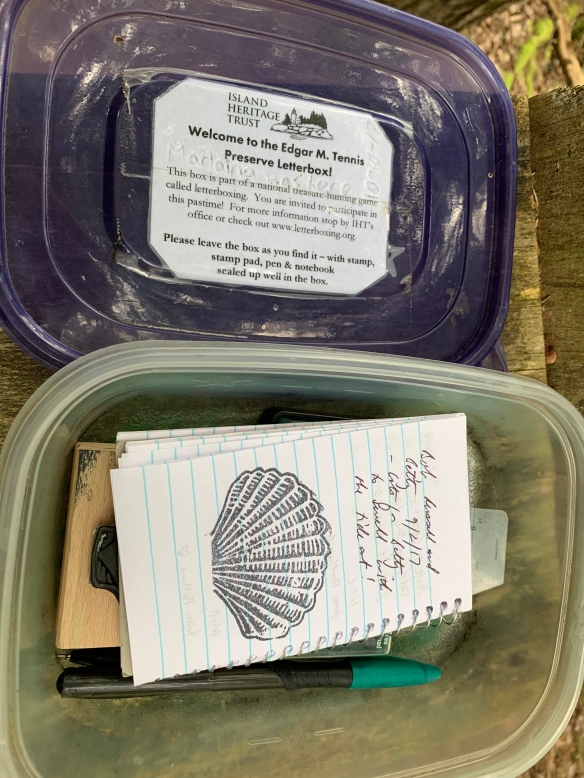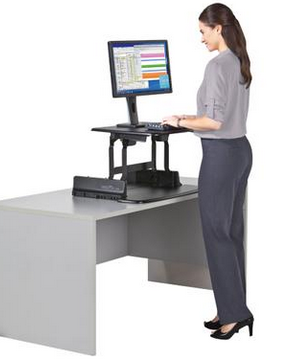
On our recent visit to the Edgar M. Tennis Preserve on Deer Isle, Russell, Betty and I not only had our first exposure to the tremendous scenic beauty found on the Preserve, but I also had my first exposure to the world of letterboxing.
Letterboxing, according to the Urban Dictionary, is an interesting combination of hiking, orienteering, travel, and sharing adventure with fellow hikers. The goal in the letterboxing world is to find waterproof letterboxes that are kept in scenic places like the Tennis Preserve — some of which are harder to find than others. When you find the letterbox, you’re supposed to leave a message, stamp the message book in the letterbox, and also stamp your own letterboxing book so you can keep a record of all the letterboxes you’ve visited. Not being aware of the world of letterboxing, or that the Tennis Preserve had a letterbox, I didn’t have a letterboxing book with me when we came across the Tennis Preserve letterbox, so I couldn’t stamp my own book. We did, however, leave a message and used the cool shell stamp to record our visit to the letterbox. Fortunately for us, the Tennis letterbox wasn’t hard to find, either.
It was fun to thumb through the Tennis Preserve letterbox notebook to see how had visited — we were surprised to learn that somebody had been there before us on the day of our visit, even though we were hiking early in the morning — and I think letterboxing would be an enjoyable, and very healthy, hobby. Any pastime that gets you out of the indoor world and into the fresh air in places like the Tennis Preserve has got to be beneficial, both physically and mentally. And the stamps are pretty cool, too.

 Several people in our office have gone even farther, and opted for non-adjustable, permanent stand-up desks — but even that might not be enough for the true believers. The last time I was in the office of the Biking Brewer, for example, he not only had a permanent stand-up desk, he had no chairs of any kind in his workspace, explaining that if he had a chair he might be tempted to sit in it. So, the last time I stopped in to talk, I ended up kind of perching on a narrow window ledge during our conversation.
Several people in our office have gone even farther, and opted for non-adjustable, permanent stand-up desks — but even that might not be enough for the true believers. The last time I was in the office of the Biking Brewer, for example, he not only had a permanent stand-up desk, he had no chairs of any kind in his workspace, explaining that if he had a chair he might be tempted to sit in it. So, the last time I stopped in to talk, I ended up kind of perching on a narrow window ledge during our conversation. In the article, Dr. Shetreat-Klein relayed two fascinating things about dirt. First, in one teaspoon of soil, there are more organisms than there are humans on our planet. (That sounds impossible, but it’s
In the article, Dr. Shetreat-Klein relayed two fascinating things about dirt. First, in one teaspoon of soil, there are more organisms than there are humans on our planet. (That sounds impossible, but it’s